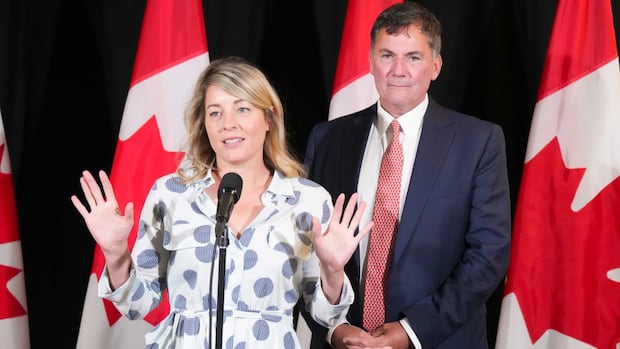What’s really behind Donald Trump’s tariff threats and ’51st state’ posts about Canada

Donald Trump’s threat of imposing whopping tariffs on Canadian exports and his trolling of Prime Minister Justin Trudeau are seen as strategic negotiating tactics by people who have closely observed him over the years. Trump’s plan to impose a 25 per cent tariff on all goods entering the U.S. from Canada and Mexico on his first day in office, unless they address issues related to drugs and migrants, is part of a larger strategy to renegotiate trade agreements.
According to Stephen Moore, a former economic adviser to Trump, the president-elect is using the threat of tariffs to ensure that trade deals are fair for American workers and companies. Despite the negative impact of tariffs on the economy, Moore believes that Trump is focused on securing the best terms for the U.S. in trade agreements. This approach is consistent with Trump’s past negotiating style, which involves leveraging threats to achieve desired outcomes.
Eugene B. Kogan, an expert in negotiation skills, suggests that Trump’s taunting of Trudeau and use of tariffs are aimed at gaining leverage in negotiations. By denigrating his opponents and exploiting their weaknesses, Trump aims to pressure them into making concessions. This win-lose approach is emblematic of Trump’s negotiating style, which prioritizes gaining leverage and making unpredictable moves to force concessions.
Analysts believe that Trump’s tariff threats against Canada and Mexico are part of a larger negotiation tactic to secure better terms in the three-way trade agreement. By using tariffs as a bargaining chip, Trump hopes to push Canada into making concessions when renegotiating the agreement in 2026. Despite criticism of Trump’s tactics, there is a consensus that his approach is geared towards gaining leverage and achieving his desired outcomes in trade negotiations.
While the ultimate goal of Trump’s tariff threats remains unclear, some speculate that his focus on issues like fentanyl trafficking and illegal migration may be a cover for larger strategic objectives. Trump’s fixation on the U.S. trade deficit with Canada, which is largely driven by crude oil imports, suggests a broader interest in making North America a key player in the energy market. By leveraging tariffs and exploiting vulnerabilities, Trump aims to position North America as a geopolitically significant region in the global energy landscape.
In conclusion, Trump’s use of tariffs and taunts as negotiating tactics reflects his strategic approach to securing better trade terms for the U.S. While his methods may be controversial, there is a consensus that his goal is to gain leverage and achieve his desired outcomes in trade negotiations. Whether his tariff threats against Canada and Mexico will lead to concessions remains to be seen, but Trump’s history of using leverage and unpredictability in negotiations suggests that he will continue to push for favorable terms for the U.S.




